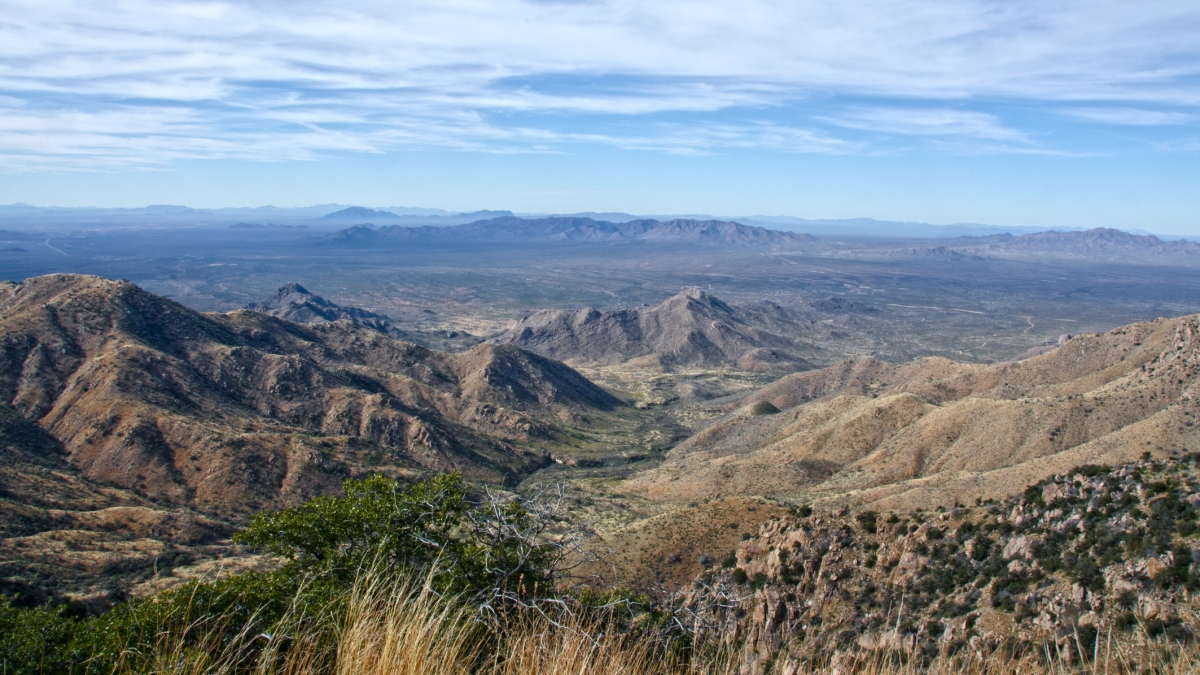Indigenous ASU research team recommends assistance for tribal members still reeling from COVID-19’s effects

A view of the Quinlan Mountains on the Tohono O’odham Nation. Photo by chapin31/iStock
When Matt Ignacio’s tribe, the Tohono O’odham Nation, donated $1 million to Arizona State University to support COVID-19 research, he applied for some of the money to understand and report any lasting effects of the virus among tribal members living on sovereign land.
The social work assistant professor received $20,000 in funding from the grant in early 2022. He asked one graduate and one undergraduate student to be his research assistants. Each, like Ignacio, was based at the School of Social Work’s location in Tucson.
And like him, they, too, were from the Tohono O’odham Nation of southern Arizona.
The study, involving interviews with 30 tribal members in 2022, was groundbreaking, Ignacio said, because all three team members are from historically underrepresented communities in academic research.
“You don’t hear about research studies where the people who designed the study, collected the data and reviewed the data are all Indigenous, from the same tribe, working in support of their tribe,” Ignacio said.
The work was Ignacio’s first as a lead researcher of a tribal-based study. Several findings were approved by the tribal Institutional Review Board in December 2023. They include recommending more social services to help tribal members cope with grief and loss, increased alcohol and opioid abuse, and the effects of long COVID; and increasing general health messaging strategies to reach both internet and non-internet users.
'Let's talk to tribal residents to understand'
COVID-19 hit Arizona hard, especially among Latino, Black and Indigenous peoples, Ignacio said.
“Because there was so much death, dying and sickness, I didn’t want that to get swept under the rug just because we were back open (after the pandemic). There is a lot of pain and loss there,” he said. “So I said, 'Let’s talk to tribal residents to understand their experiences during and after the pandemic.'”
Coincidence initially accounted for how the team formed.
“I started teaching at ASU in person for the first time in fall 2021, and I had a student in my very first class who was from my tribe,” Ignacio said. “I had the idea and the funding, but I still had to work out details. I consulted with him, and said, 'Let’s put together an interview guide.'”
Ignacio had money to pay Quinton Antone as a graduate research assistant. Antone, from San Miguel, Arizona, in the Chukut Kuk District of the Tohono O’odham Nation, earned his Master of Social Work in May 2023.
“One thing about the (ASU School of Social Work) Tucson location is that we’re trying to create a space for research to live there, so students can tap into real-time community-based research taking place,” Ignacio said. “”It was fortuitous to have two researchers from my tribe for this project.”
As Antone graduated, another student, Fawn Antone (no relation to Quinton), from Pisinemo, Arizona, in the Pisinemo District, also assisted Ignacio the following fall, and is currently helping report study findings. Fawn Antone is expecting to earn a Bachelor of Social Work this spring and will continue on to the Master of Social Work advanced standing program in May 2024.
Researchers' experiences enhance the work
Quinton Antone said the research team members brought their lived experiences to the work.
“These experiences include living on the reservation, using our Himdag (way of life) to guide our thinking and actions, using our Indigenous language when we interact with each other and knowing which parts of our natural landscape are sacred and/or connected to our traditional stories,” said Quinton, who today works for behavioral health clinic Intermountain Centers in Sells, Arizona.
Fawn Antone agreed.
“Being a tribal member and living on the Tohono O’odham Nation during the pandemic, I was able to give firsthand insight on how tribal members coped with the adjustments of stay-at-home orders,” Fawn Antone said. “I helped research what other tribes experienced when COVID affected their respective reservations.”
She explored how other tribal communities dealt with alcohol and substance use during the pandemic and whether mental health issues resulted from the pandemic.
“Conducting this research, I struggled finding any information related to Indian Country here in the U.S.; the research was minimal,” she said.
Ignacio said being from the same tribe was “incredibly helpful” for the research team.
“It helped us complete the research faster to know the community,” he said, noting that data collection that could have easily taken a year or longer was conducted in about six months.
Quinton Antone said conducting research among fellow tribal members enabled the researchers to connect with participants on a cultural level, which allowed for deeper, more truthful dialogue and answers.
“I think the participants were not as guarded with their answers, in ways they might have been with cultural outsiders,” Quinton Antone said. “Part of this openness may have to do with the participants seeing our research team as being less judgmental, and using their answers for the benefit of the community, as opposed to being used in ways that might harm them or us.”
The School of Social Work is part of the Watts College of Public Service and Community Solutions.
More Health and medicine

College of Health Solutions launches first-of-its-kind diagnostics industry partnership to train the workforce of tomorrow
From 2007 to 2022, cytotechnology certification examinees diminished from 246 to 109 per year. With only 19 programs in the United States, the cytology workforce that stands at the front line of…

ASU's Roybal Center aims to give older adults experiencing cognitive decline more independence
For older people living alone and suffering from cognitive decline, life can be an unsettling and sometimes scary experience.Arizona State University is out to improve that experience.Two projects…

Dynamic data duo advances health research
The latest health research promises futuristic treatments, from cancer vaccines to bioengineered organs for transplants to medical nanobots. While these technologies may one day be…

